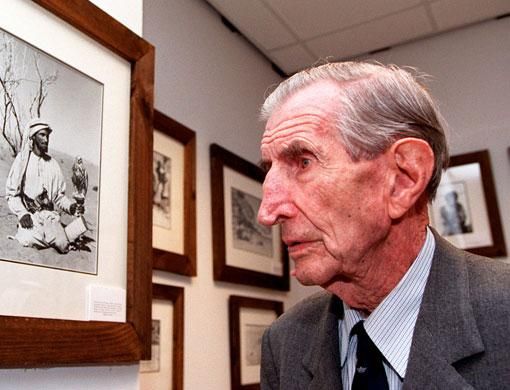Al Ain: New life was given to Al Jahili fort last week with traditional music, poetry and songs accompanying the reopening of Al Ain's ancient historical structure.
Al Jahili is one of the largest forts in the UAE and was built in the 1890's on orders from Shaikh Zayed Bin Khalifa (ruler of Abu Dhabi 1855-1909).
It was home to members of the Al Nahyan ruling family and was later used by the Trucial Scouts, in the beginning of the 1950s.
For the past two years, the fort was being restored under a project implemented by the Abu Dhabi Authority for Culture and Heritage (ADACH).
The historic fabric of the building has been carefully preserved and the restoration work has transformed it into a cultural centre and tourist attraction.
The fort will house a visitor information centre, a temporary exhibition gallery and a permanent exhibition on Wilfred Thesiger, the intrepid explorer; travel writer and photographer. Thesiger, who twice crossed the Empty Quarter in the 1940s, is locally known as Mubarak Bin London.
Shaikh Sultan Bin Tahnoun Al Nahyan, Chairman of ADACH, said, "The reopening of the Al Jahili Fort is just the start of a wider project to reopen a number of historical buildings in Al Ain."
Al Jahili restoration work was approved by UNESCO.
"We have big plans for Abu Dhabi city, such as the cultural district in Sadiyat Island, that includes number of international museums. We are planning to expand our projects to preserve historical buildings," Shaikh Sultan said.
The restoration of the Al Jahili fort is unique in that it combined a mix of traditional materials and construction techniques, with latest technology.
The natural climate control of the traditional mud brick has been enhanced by embedding cold water pipes into the mud plaster of the walls. As a result, the internal climate remains a comfortable 22 degrees Celsius.
Oasis
"The Al Jahili area used to be an oasis, but it dried out. Shaikh Zayed Bin Khalifa started building the fort in 1890. It was completed by 1898. The date is written on the gate," said Mohammad Al Neyadi, Director of Historic Environment at ADACH. "It became a summer residence for the ruler, who sought to keep the peace between the various tribes at that time," he said.
"The idea behind turning the fort into a cultural centre is to develop it and make it a part of the daily life of residents" said Dr Sami Al Masri, Director of the strategic planning office in ADACH.
By the middle of next year, the second phase of the project will be completed. A video show in the fort's tower will highlight the history of Al Ain.
Thesiger's exhibition in the foirt will contain 90 photographs showing his passion for Arabia, where he is said to have spent "the five happiest years of his life".
"The photos have been brought from the Petrie Museum in Oxford," said Imma Plana, strategic planner in ADACH and curator of Wilfred Thesiger exhibition.
"Thesiger came to the Al Jahili fort several times and he took photos of it. He had a special relationship with Shaikh Zayed, the founder of the federation."
The fort's visual room contains a documentary film on Thesiger's life and his two Bedouin companions Salim Bin Kabina and Salim Bin Ghabaisha.
Thesiger made his first crossing of the Empty Quarter in 1946, accompanied by the two boys.
Salim Bin Kabina cannot remember how old he was when he met Thesiger. He was present at the reopening of the fort.
"I accompanied Bin London to Yemen, Oman, Saudi, everywhere," he said.
"It was tough time. "A man could kill his brother in a fight over just a stick like this," he said, raising a stick in his hand.














